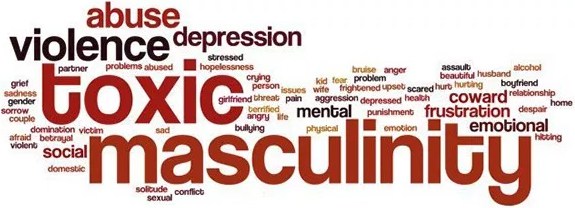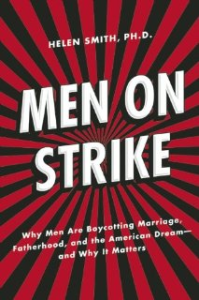The solution is not going to be brute force – The other side of the opioid epidemic — we’re people in severe pain | TheHill
When I went into the office one Saturday afternoon in August 1994, I planned to spend a few hours finishing a brief that was due in federal court Monday morning
.At the time, I was an attorney for the justice department. After 30 minutes of working at my desk, my back started to burn; it felt as if acid were eating my spine. In rapid succession, my muscles seized and threw me from my chair. I landed on the floor, stunned, as my body seared with pain.
What I didn’t know then was that the pain would persist, and that I would be unable to sit, stand, or walk unassisted for almost twenty years. Nor could I have imagined that I would take opioids.
Opioids fill the news with a steady stream of stories of lives lost from overdose and abuse. What we rarely hear is the other side — opioids are also the most powerful pain medication we have. For me, they were life-restoring.
For some people, probably many or most that are on opioids…
Pain patients today are not so fortunate. In our effort to thwart the genuine problem of drug overdoses, we are taking life-sustaining medicine away from suffering people.
Long-term, legitimate pain patients who have relied on opioid analgesics can no longer fill their prescriptions in the many states that set maximum dosage and supply limits, often of three to seven days.
Even in states that contain exceptions for long-term pain care, insurance companies and pharmacy policies use such laws as a reason to deny coverage or fills. Pain patients are being denied treatment and involuntarily tapered off of opioid medications, even if they’ve never shown any risks of abuse.
And this is an interesting factoid…
The Department of Veterans Affairs, which sponsored one of the first systematic efforts to discontinue opioid treatment, recently issued an abstract reporting that the results were not fewer overdose deaths but increased suicide mortality.
I bet you didn’t know this…
The prescribing of opioids has dropped every year since 2012 and is at 10 year low — and yet drug overdose deaths have skyrocketed. Meanwhile, our public policy looks backward in time, intruding on the doctor patient relationship and burdening patient care.
One of my concerns is that small minds like Jeff Sessions can’t possibly work constructively to come up with a reasonable solution and the author appears to think the same way…
The Attorney General recently responded to the concerns of pain patients by telling them to “take a few Bufferin or something and go to bed.”
His comment shows an astonishing misunderstanding of a condition whose quality of life index (QLI) is akin to that of late-stage cancer. Fifty million Americans suffer from severe or persistent pain, which twenty-five times more than those who misuse opioids.
Chronic pain is also the primary cause of disability in the US, and it costs the economy half a trillion dollars every year.
There is an important but often glossed over distinction between using medication for a health condition in a way that restores function, enabling work and participation in family life, and misusing a substance in a manner that destroys function.
Most people who take opioids for pain do not abuse them: studies show risk for addiction in such patients varying between .07 and 8 percent. (Emphasis added, also that seems like a wide awfully wide range, 100: 1 basically) And, when opioids are prescribed properly with screening and follow through care, the risk of addiction goes down significantly.
And the authors concludes with a summary of her own personal situation…
Like many pain patients, I initially resisted taking opioids. I exhausted every other possible treatment first.
Because my condition resulted from a surgery when a doctor severed nerve plexuses in my spine, I tried infusions, nerve blocks and even a repeat surgery. I did physical therapy, acupuncture, and biofeedback. But nothing abated the pain.
Treatment with opioids and integrative care allowed me to maintain a job, a sense of purpose, and community until I found my way to healing. Mine is a story rarely told of someone who took opioid analgesics for years and went off them without incident when the pain remitted. Given the environment today, such stories may well become extinct.
Giving Jeff Sessions the benefit of the doubt, which is being way more than gracious, he is a man out of step with place and time. Seems like he lacks empathy as well, although that may be part of the job. But taking away the benefit of the doubt, which in my opinion he doesn’t deserve, Mr. Sessions is a product of the Reefer madness generation. For example, putting marijuana on the same playing field with heroin? From Reason magazine – Jeff Sessions: Using Marijuana Is ‘Only Slightly Less Awful’ Than Heroin. When it comes to addressing drugs in our culture, Jeff Sessions simply is not qualified.
Whatever the solution, I’m doubtful it’s by decree or putting more burden on doctors. Also, from above, we know what doesn’t work…
The prescribing of opioids has dropped every year since 2012 and is at 10 year low — and yet drug overdose deaths have skyrocketed. Meanwhile, our public policy looks backward in time, intruding on the doctor patient relationship and burdening patient care.
Here is another article on the valuable role that opioids play in those suffering severe pain from Jim Treacher at PJ Media: Jeff Sessions to Pain Sufferers: Take Two Aspirin and Stop Whining.
I also have clients that use opioids such that they can function in day to day life. I’ve had one change doctors to someone who will provide her with the Rx (read quantity) of opioids she needs to make it though the day.















